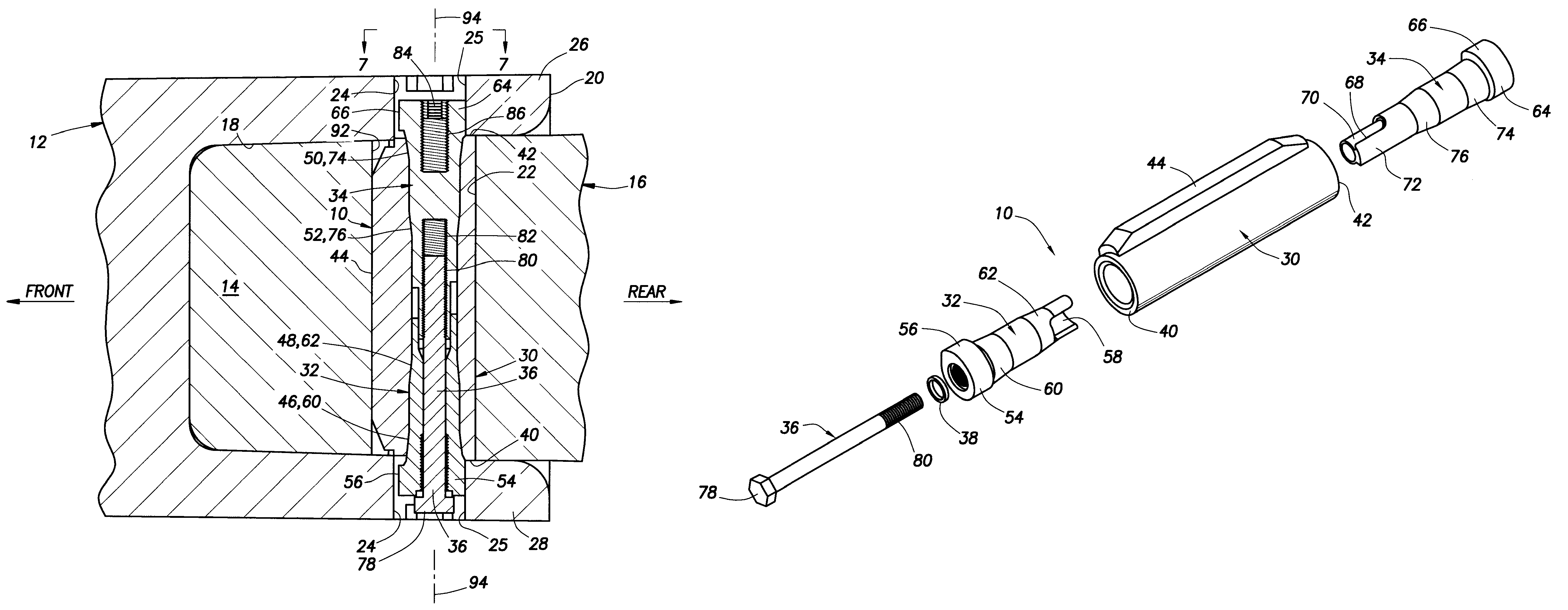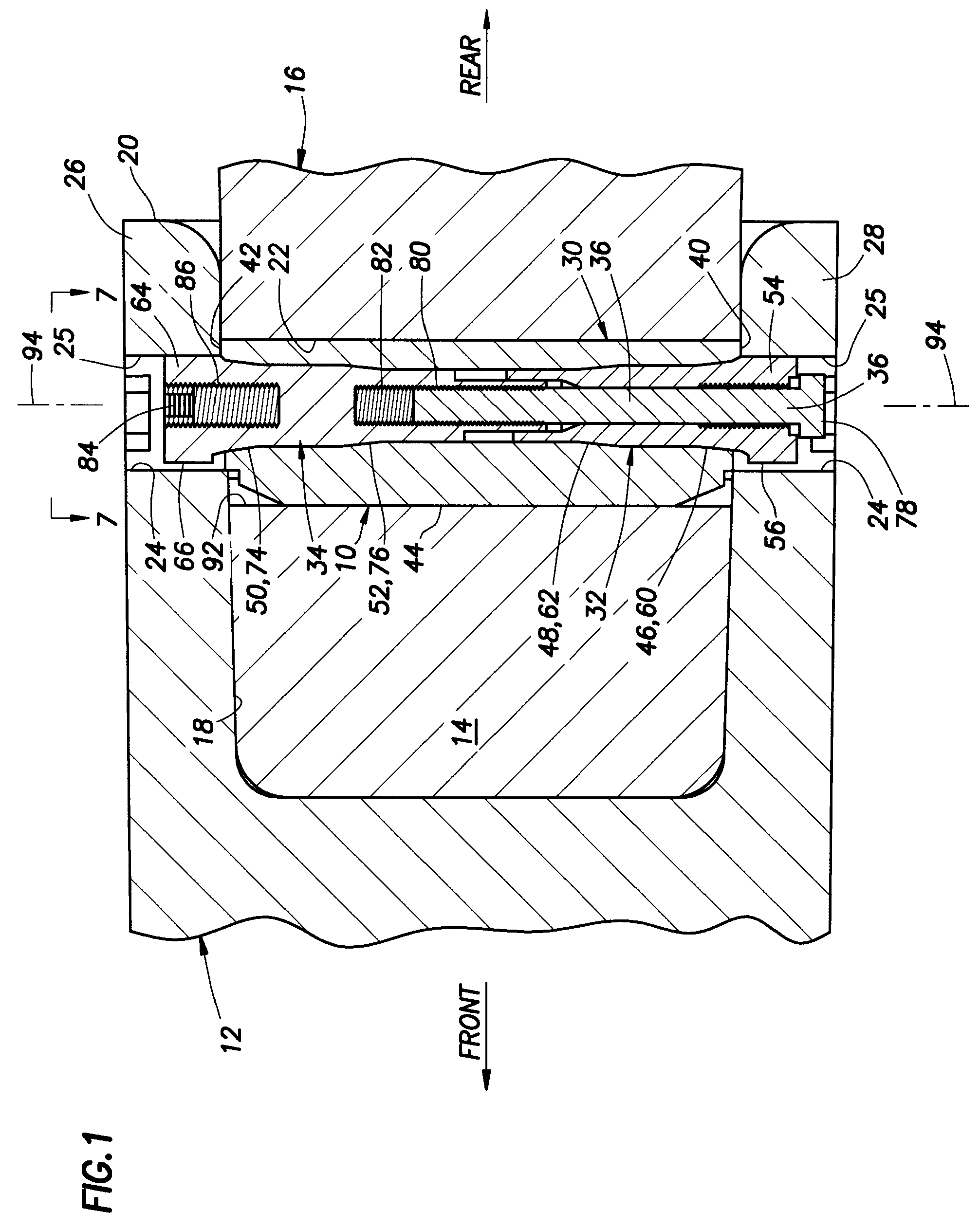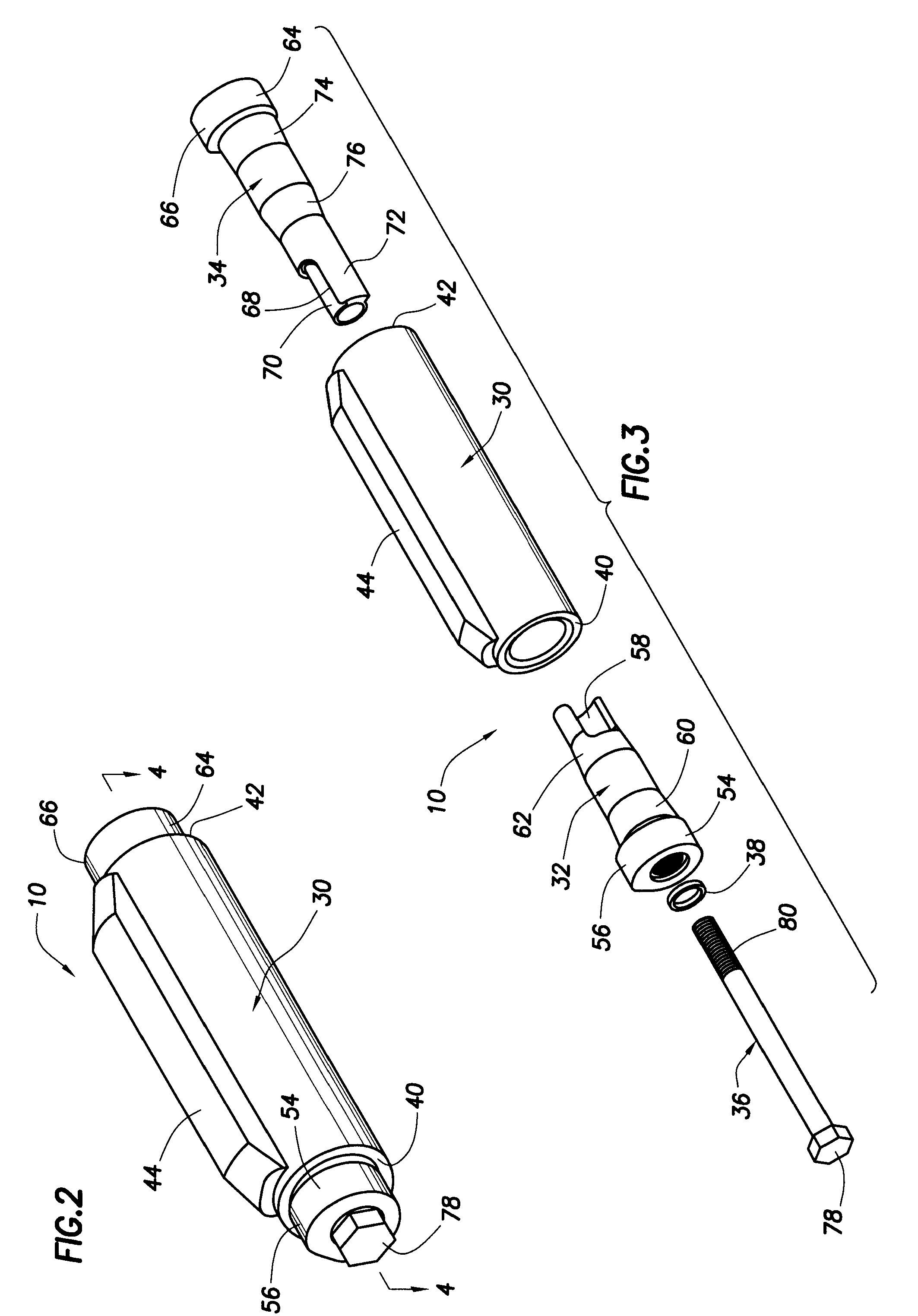Double cam taper lock connector pin apparatus
a technology of taper lock and connector pin, which is applied in the direction of soil shifting machine/dredger, construction, etc., can solve the problems of significant surface wear and loosening of wear member
- Summary
- Abstract
- Description
- Claims
- Application Information
AI Technical Summary
Benefits of technology
Problems solved by technology
Method used
Image
Examples
embodiment 110
[0054]A first alternate embodiment 110 of the previously described connector pin assembly 10 is illustrated in FIGS. 8-10. In order to facilitate a comparison between the embodiments 110 and 10, components in the connector pin assembly 110 similar to those in connector pin assembly 10 have been given the same reference numerals to which the subscripts “a” have been appended.
[0055]The sleeve member portion 30a of the connector pin assembly 110 has oppositely sloped annular longitudinally tapered interior surface areas 112,114 (see FIG. 10) that continuously extend from a longitudinally central interior area of the sleeve member 30a to its opposite ends 40a and 42a. Complementarily configured longitudinally tapered side surface areas 116,118 are respectively formed on the connector pin sections 32a,34a as shown in FIGS. 9 and 10. To rotatably couple the pin sections 32a,34a upon their insertion into the sleeve member 30a, splines 88a are formed on a reduced diameter inner end portion ...
embodiment 124
[0057]An assembled second alternate embodiment 124 of the previously described connector pin assembly 10 is cross-sectionally illustrated in FIG. 11. In order to facilitate a comparison between the embodiments 124 and 10, components in the connector pin assembly 124 similar to those in connector pin assembly 10 have been given the same reference numerals to which the subscripts “b” have been appended.
[0058]In the connector pin assembly 124 the sleeve member 30b has an annular longitudinally and radially inwardly tapered surface area 126 extending inwardly from its end 40b, and an untapered interior surface area 128 extending through the longitudinal balance of the sleeve member 30b. At the juncture of the interior surface areas 126,128 is an annular interior shoulder 130 that faces the end 42b of the sleeve member 30b.
[0059]Pin section 32b has a tapered outer side surface portion 132 complementary to the tapered sleeve member interior surface 126, and pin section 34b has a non-tape...
embodiment 150
[0062]A third alternate embodiment 150 of the previously described connector pin assembly 10 is cross-sectionally illustrated in FIGS. 12 and 13. In order to facilitate a comparison between the embodiments 150 and 10, components in the connector pin assembly 150 similar to those in connector pin assembly 10 have been given the same reference numerals to which the subscripts “c” have been appended.
[0063]In the connector pin assembly 150, the interior side surface 152 of the tubular sleeve member 30c is untapered along its length. An annular shoulder 154 is formed in a longitudinally intermediate portion of the sleeve member 30c and has opposite side surfaces 156,158 respectively facing the opposite ends 40c,42c of the sleeve member 30c. A circumferentially extending series of serrations 160 are formed on the annular side surface 156.
[0064]Pin section 32c has the indicated hollow configuration, and is provided with a plurality of internal grooves 162 unequally spaced around its interi...
PUM
 Login to View More
Login to View More Abstract
Description
Claims
Application Information
 Login to View More
Login to View More - R&D
- Intellectual Property
- Life Sciences
- Materials
- Tech Scout
- Unparalleled Data Quality
- Higher Quality Content
- 60% Fewer Hallucinations
Browse by: Latest US Patents, China's latest patents, Technical Efficacy Thesaurus, Application Domain, Technology Topic, Popular Technical Reports.
© 2025 PatSnap. All rights reserved.Legal|Privacy policy|Modern Slavery Act Transparency Statement|Sitemap|About US| Contact US: help@patsnap.com



